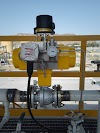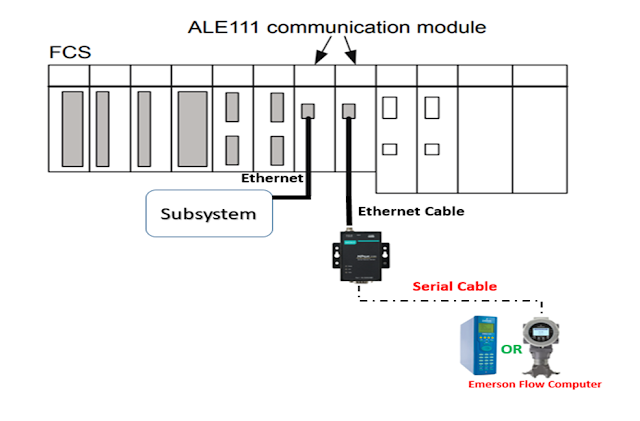What are the Design Basis Guidelines for an Oil & Gas Industrial Instrumentation Project
Part-3
Instrumentation Specifications:
Field Transmitters:
All transmitters must be smart type operating on 4-20mA, 24V DC, 2-wire loop powered configuration, with analog signal superimposed with HART protocol.
Output Commands:
All output commands must be powered by 24V DC.
Signal Termination:
All electronic signals must terminate at the battery limit of the skid in separate Junction Boxes (JBs). Multi-pair cables must be used to connect these signals with DCS/ESD Marshalling in the Equipment room.
Feed Through Terminals:
Use "Wiedmuller" or equivalent feed through terminals in Marshalling cabinets.
Instrument Design:
All instruments are designed for sweet gas service. No NACE compliance for MR 0175 is applicable.
Remote I/O Concept:
No remote I/O concept is considered.
System Design:
Separate systems with Marshallingcabinets will be used. Similarly, separate Junction boxes for ESD & DCS Systems will be designed.
Emergency & Fire Shutdown:
In case of emergency & fire, all ESDV & BDV valves must operate with manual initiation by operator or automatically through combined control & ESD system for process shutdown etc. Shutdown activating devices (level, pressure, temperature) must be electric type. All ESDV & BDV must be provided with 24VDC solenoid coil for shutdown purpose.
Critical Control Panel:
Critical Control Panel is being supplied for all Level Shutdown Button with Protection Hood. MOS enable switches and MOS Enable Pilot Light.
Instrument Air Supply:
Instruments must operate on instrument air supply, which must be supplied through Instrument Air Header along the skid.
Instrument Installation:
Instruments must be installed on instrument stands where direct mounting is not possible.
Cabling:
Underground/above-ground cabling must be used as per requirement. The above-ground cable must run through Cable tray/Ladder and conduit.
Zone-2 Hazardous Area:
Use Exe JB’s (SS material-316) for cable termination in Zone-2 hazardous area.
Temperature Gauges:
Temperature gauges must be bi-metallic every angle gauges for local indication.
Temperature Instruments:
All temperature instruments must be provided with thermowells and must be 3 wire RTD, Pt100 & integral to the transmitter.
Fiber Optic Cable:
Fiber optic cable must be single mode, multi-tube construction, loose fill, gel-filled, armoured cable as per ITU-T G.652. It must have resistance to pest attack, sandstorm and be impervious to sunlight.
Cable Signal Separation:
Fire and Gas, ESD and DCS signals must not be combined in the same
multi-core cable.
Signal Separation:
Following signals must not be combined in the same multi-core cable:
- Analog inputs and outputs
- Digital inputs and outputs
- RTD
- Thermocouple/mv
- Machine Monitoring signals
- Special signals such as pulse outputs.
Conductor Specifications:
Stranded conductors must be annealed copper wire. The minimum size of instrument conductor must be:
- 1.0 mm² for Analog & digital field signals and
- 2.5 mm² for SOV, Sirens and Beacons operation.
- Cabinet internal cables conductor must be a minimum 1.0 mm².
Cable Construction Standards:
Construction of cable must be, in general, as per BS 5308 part-I.
Fire Resistant Cable:
Fire resistant cable must have mica tape or other suitable material to meet the resistance criteria defined in IEC 331 & BS 6387.
Cable Screening Philosophy:
Screening philosophy of cable must apply as following:
All single pair cables for Analog, RTD, Thermocouple, Digital (5 – 20
VDC) and low voltage signals (<5 VDC) must be provided with screen;
Multipair cables for Analog and digital (5-50 VDC) signals must have
collective overall screen;
Multipair/multitriad cables for RTD analog Thermocouple & low
voltage (<5 VDC) signals must have individual and collective overall screens.
Cable Armouring:
Outdoor above-ground and underground cabling must be provided with steel wire armour (SWA). Indoor cables need not be provided with armor.
Flame Retardant Cable:
Cable for normal application must be Flame Retardant per IEC 332-3 –C.
Fire Resistant Cable for Special Applications:
Cable for ESD, Fire and Gas application must be Fire Resistant by IEC 331 and BS 6287.
Control Room Cable Entry:
At control room cable entry, MCT frame and blocks must be used. The cable below the control room cabinets must be routed in cable trays.
Fiber Optic Cable Installation:
Fiber optic cable must be laid in a separate trench from the pipeline.
Underground Fiber Optic Cable Installation:
Fiber optic cable must be laid underground in a 4” GI steel conduit. At all crossings e.g. roads and railways, cable must be laid in PVC pipe sub-ducted into GI pipe.
Fiber Optic Communication Equipment:
Fiber optic communication equipment to be used for establishing communication of well pads to the centralized processing locations.
Zone-2 Cable Gland:
Cable gland must be EEx(e) type for Zone-2 hazard.
Cable Gland Specifications:
Cable glands must be made of brass nickel-plated, double compression type, IP66, metric thread (ISO), earth tag, lock nut, sealing washers and PCP shroud as per BS6121.
Junction Box Specifications:
In general, the junction boxes must have the specifications like, Hazardous Class: EEx (e)
Enclosure Class: IP65, enclosure Material: Stainless Steel, Terminal Block Color: Gray for signals, Green/Yellow for Screen Earth system.
Terminal block size suitable for wire size of 2.5mm² and screen earth
0.5mm². Gland plate thickness must be 2mm. Junction boxes must be provided with
sufficient 2.5mm² terminals, end plates, stoppers and earthing terminals.
Cabinet Dimensions:
Dimensions of the cabinet must be as per the manufacturer’s standard. However, the minimum size must be 1200mm W x 2000mm H x 800mm D, with 100mm including the plinth. Empty enclosures must be sourced from standard manufacturers like Rittal, Hoffman, Weidmuller, B-line, or equivalent.
Cabinet Features:
The cabinet must have a bottom cable entry and a removable gland plate must be provided at the bottom for field cable entry with 20 % spare capacity.
Cabinet Material & IP Rating:
The material of construction for control cabinets must be a minimum 2mm (14 or 16 gauge) sheet steel. The cabinet color must be RAL 7035. The complete enclosure must be of a minimum IP 54 design suitable for indoor installation.
Wiring Cross-Section:
Connected wiring must have an adequate cross-section (not less than 0.2 mm²).
Spare Capacity:
All Junction Boxes (JBs) and Cabinet must be designed with at least 25% spare terminals and also 25% spare space in addition to 20% installed I/O capacity.
Trunking/Wire Ways Capacity:
Trunking/wire ways must have 40% spare capacity.
Cable Spare Capacity:
All Junction Boxes (JBs) and multicore cables must have at least 25% spare capacity.
Mounting Heights:
No equipment or terminal block/rail in the system cabinets must be mounted less than 400mm above the floor. No equipment or terminal block/rail in the marshaling cabinets must be mounted less than 200mm above the floor.
Terminal Spacing:
A minimum of 50mm must be allowed between each terminal row and any plastic slotted.
Terminal Mounting:
Terminals must be mounted on rails that are attached to a back pan/support and not directly to the surface of the enclosure.
Wiring Separation:
Wiring of voltages greater than 24V (AC or DC) must be separated from instrument signal wiring.
ESD System Cabinet Reserve Space:
ESD system cabinets in the DCS/ESD equipment room must have reserved space for at least two additional I/O racks.









0 Comments